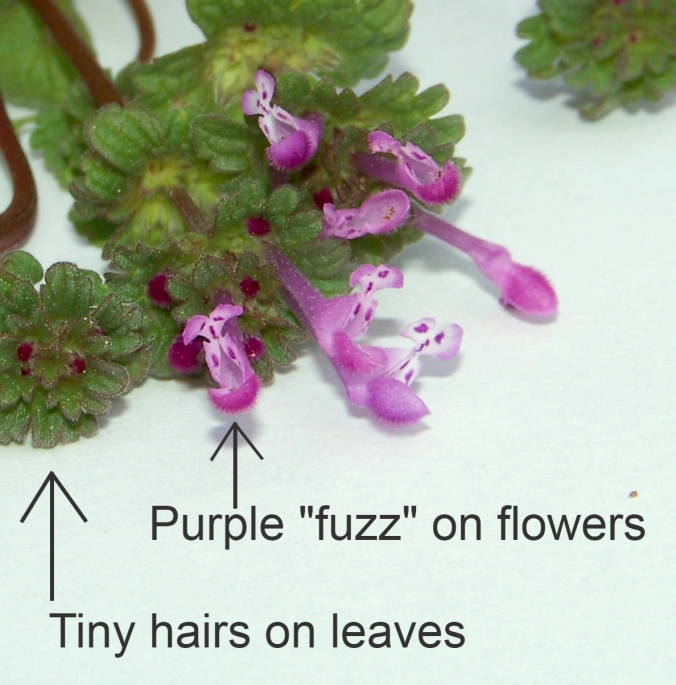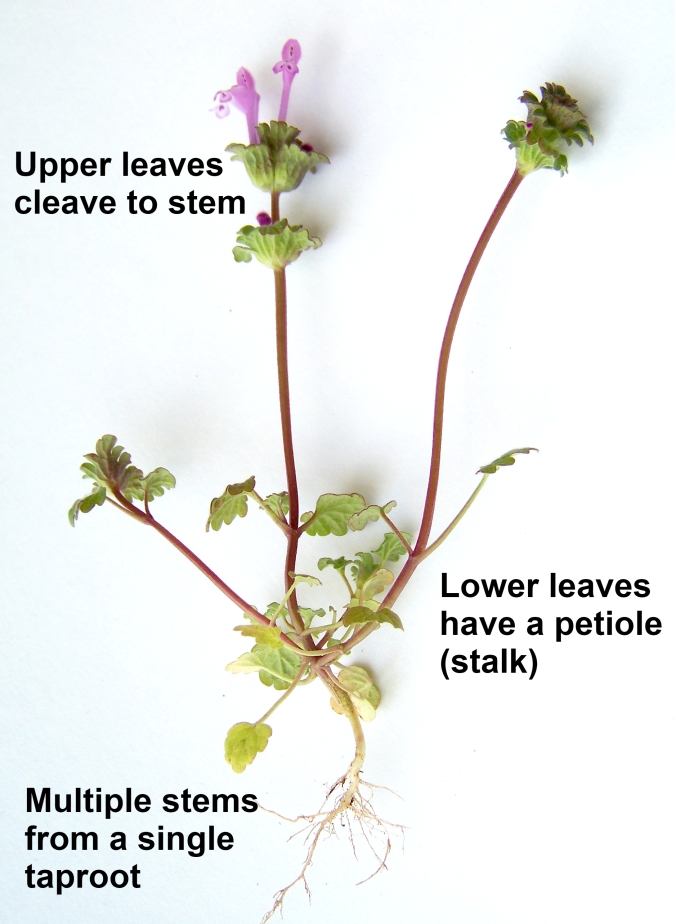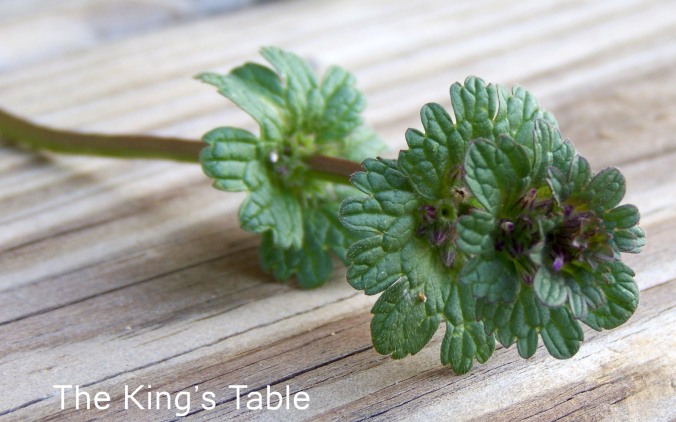Henbit (Lamium amplexicaule) has taken over my garden at the moment. The little purplish pink flowers are pretty and it’s nice to have that bit of color while waiting for other things to sprout, but does it have to grow everywhere? I pull one, and three more appear in its place.
(This post was originally published Spring 2017, but I accidentally moved it to drafts and had to republish it. During the new publish date of July, henbit was definitely not everywhere in my garden and had died back for the hot season.)
Henbit does have one saving grace — it’s edible. It’s not a weed that I eat a lot of, as it’s a bit too “green” for my tastes. I prefer it in smaller amounts, like how we use herbs, rather than larger amounts like vegetables. But at least I know that if the worst happened and my spring leafy crops failed, henbit is an alternative. I’ve finely chopped henbit and mixed it with other greens in a frittata, and soon I plan to try this henbit pesto recipe from The Foraged Foodie.

Henbit is an annual that grows in late winter or early spring. It’s in the mint family, but it doesn’t taste like mint. Its flavor is more similar to kale. The stems, leaves, and flowers can all be eaten raw or cooked, but older stems can be tough. The clumps of leaves are also chewy, so I prefer them finely chopped or pureed, like in pesto or a smoothie.
There isn’t much nutritional info available for henbit. Unlike your grocery store greens, it’s not well studied. It’s said to be high in iron and various vitamins. In general, wild greens are more nutritious than their cultivated relatives.
How to Identify Henbit

Henbit, before and after it blooms
The easiest time to identify henbit is after it blooms. The flowers are tiny and may be pink, purple, or reddish. Minuscule pink or purple hairs are on the upper part of the flower and small dots are on the lower part. My sister and I used to call them bunny flowers because we thought they looked like rabbits if you turned them upside down.

Henbit flowers
The stems are square and green, turning shades of purple, red, or brown as they age. Multiple stems grow from a single taproot and may grow up to 18″ tall. They typically stand erect but may flop over and grow more parallel to the ground.

Henbit – the whole plant
Leaves grow opposite each other and are a little hairy. The upper leaves clasp the stem while lower leaves are attached by a petiole (small stalk). The leaves are round in shape, and the margins (edges) are scalloped with rounded teeth. The veins of the upper leaves are recessed, giving a wrinkled appearance. The upper and lower leaves are typically spaced a good distance apart.

Henbit, just before the flowers form.
There are no poisonous lookalikes to henbit. It’s sometimes confused with purple dead nettle or ground ivy, both of which are edible.
As always with wild edibles, never eat something unless you’re 100% sure of its identification. Also, eat just a couple of bites the first time you try a new weed to make sure you don’t have a reaction. People can have reactions to absolutely anything, even if they’re not prone to food allergies.

Need more pictures or information about henbit? There are articles at Eat the Weeds and Edible Wild Foods.
Can you find Henbit around your home? Have you tasted it yet?
More wild edibles at The King’s Table:
Sheep Sorrel

Yes, I found it, picked some, cleaned it well, and put it in an omelet! Been pulling it and throwing it away for years. Who knew you could eat it!!!
LikeLike
I love the name of your blog and I love your thorough descriptions and pictures. Thank you so much.
LikeLike
and I have been waging war on my abundant food supply ????
LikeLike
Thank you for this great information and the excellent photos. Glad I found your site.
LikeLike